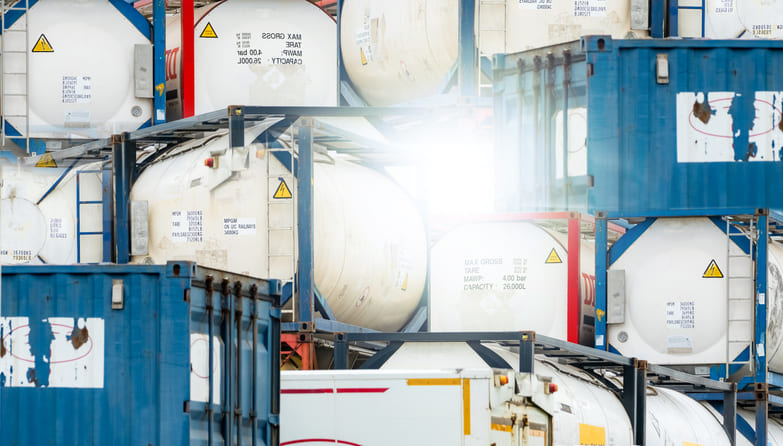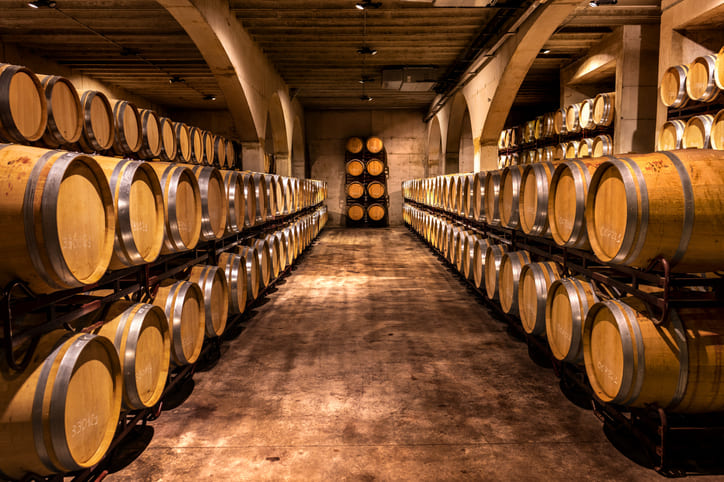Choosing an ISO or flexitank for bulk liquids: 3 factors to consider
When you’ve weighed up the pros and cons of full container load shipping (FCL) and less than container load (LCL) shipping and decided upon full loads, then considered bulk shipping benefits over cased FCL transport, the next thought to occupy your mind, if you chose bulk shipping, would be ISO tank or flexitank. We’ve listed the three key points to consider, so you make a well informed choice.
ISO tank or flexitank? The five key factors to consider
1.Product specification & compatibility
Depending on your product, the choice of which tank you should choose might already be made for you. Flexitanks can only carry non-dangerous or non-hazardous liquid substances whereas an ISO tank can handle both dangerous (DG) and non-dangerous liquids.
Compared to shipping packaged goods, the large volume carried by bulk shipments make the cargo naturally resistant to temperature changes during transit. Have you ever tried to heat a swimming pool naturally? It takes a long time right! Though if you have a concern, know that ISO tanks have insulated walls, giving some degree of protection against thermal fluctuations.
Both ISO tanks and flexitanks come with temperature control options. Reefer ISO tanks are not widely available and you can really only get hold of them on a dedicated lease. Something that is obtainable is our 40ft flexitank that fits in a 40ft reefer (refrigerated container). The container can be kept at any desired temperature between -30ºC/+30ºC / -86ºF/+86ºF, making it ideal for transporting products like dairy and fruit juices.
Overall, flexitanks are more readily available in the market. Hillebrand makes flexitanks to address the specific needs of the products we’re asked to carry, which is why our range is so varied. Take a look…
An important factor to consider is at a basic chemical level. Hillebrand flexitanks are made of recyclable PE plastic and ISO tanks are built from stainless steel. Depending on your product, then you may find one tank more suitable to the other.
2.Budget & Equipment Availability
If you want to reign in costs, a sure-fire way to do so is to ship less containers. Which you can do in both types of tank. A products specific gravity (SG) will also have an impact on the amount of volume you can put in a tank too. Water for example has a SG of 1 which equals 1000 kilograms per cubic meter. The heavier the product the less you can put in a tank because of the overall payload limit.
ISO tanks usually hold around 26,000L but can increase the payload further by using swap body equipment. This equipment is specialized however, and although common for inter-continental EU moves via rail/road, they are not suitable for ocean carrier transportation due to their non-standard shipping container size i.e. 23 or 25ft. Standard flexitanks hold 24,000L but our XL Flexitank can hold up to 27,000L, yet still fits into a single 20ft container.
But, you’ll also need to consider the availability of the tanks…
Considering the global shipping crisis, lack of equipment, positioning, and congestion are all affecting costs enormously, as well as shipping times. Shipping containers are hard to come by right now and ISO tank availability is equally as challenging, so think on which tank can maximum the literage you move in the time you need it to, before placing your order.
ISO tanks are usually held as part of a fleet and must be transported on a ship to where they’re needed. Whereas the flexitanks we produce (on two different continents) can be mailed in the post as they fold up nicely.
ISO tanks are in high demand and because they need repositioning ASAP for the next shipment, their detention rate in the market is fixed. It’s can be US$50-60 per day per tank whereas shipping line detention charges for containers are progressive, which can make them more expensive over many days.
Both ISO tanks and flexitanks can be used for storage. The content of a flexitank can be discharged/cross pumped to another flexitank on-site and the container returned to port, to avoid demurrage and detention charges.
3. Sustainability
Hillebrand flexitanks are made from fully recyclable PE plastic and because they are single use they avoid the possibility of cross-contamination entirely. ISO tanks require cleaning in order to to prepare them for the next shipment.
The cleaning of an ISO tank is energy and resource intensive and usually carried out in an approved and accredited depot. But, they are reusable so the life span of an ISO tank is far greater than that of a flexitank. That said, the recyclability of a flexitank makes it an environmentally friendly option.
Important to note that GHG emissions for a flexitank will be much lower compared to an ISO Tank shipment where there is no back haul load for the ISO Tank after delivery and discharge.
Hillebrand helps you choose
Hillebrand is proactive in helping you choose exactly the right tank for your requirements, whether that’s an ISO tank or a flexitank. We take every detail into consideration, including the properties of your product, your budget, equipment availability, and the conditions your shipment will face before, during, and after transit.
-ebook-1---global-freight-forwarding/hil---cta-text-1---ebook-global-freight-forwarding-(1).png?sfvrsn=a2292c3e_3)
-ebook-1---global-freight-forwarding/hil---cta-post---blue.jpg?sfvrsn=f6dabc2a_2)



